For a lot of board gamers out there, we’ve got shelves full of games that we’ve picked up at places like Target or Barnes & Noble – each representing a different play style and different mechanics. The question is: where do you go next? If you like Game A, then what other game should you get to build upon that?
In a previous article we introduced you to our Top Six “Board game step ladders”. The list that we present here begins with a game that’s pretty standard and fairly easy to find. Then, we follow that up with other games that take the concepts and core mechanics the first game presents and then build upon or improve them. As you climb the ladder, the games become more involved and more challenging. In today’s Step Ladder, the theme is real estate development with dice. Each of these games utilizes dice in very different ways in order to build up and develop infrastructure.
Monopoly → Dice City → The Castles of Burgundy
Monopoly
The board game Monopoly has existed in one form or another since the early 1900s. The exact lineage of the game is a contested debate. Some claim that the game was created by an American named Elizabeth Magie and others contend that we owe the game to Charles Darow. What is not contested, though, is that the game is very, very old and is wildly successful. It is also probably one of the most looked down upon games in the hobby board gaming industry.
However, it is important to remember that, for many, games like Monopoly or Scrabble are many peoples’ only experience with board games. So where do you go from Monopoly? There are many lists out there that provide a long list of gateway games, but this list is different. I’m going to take some of those mechanics that make Monopoly run and I’m going to elevate them.
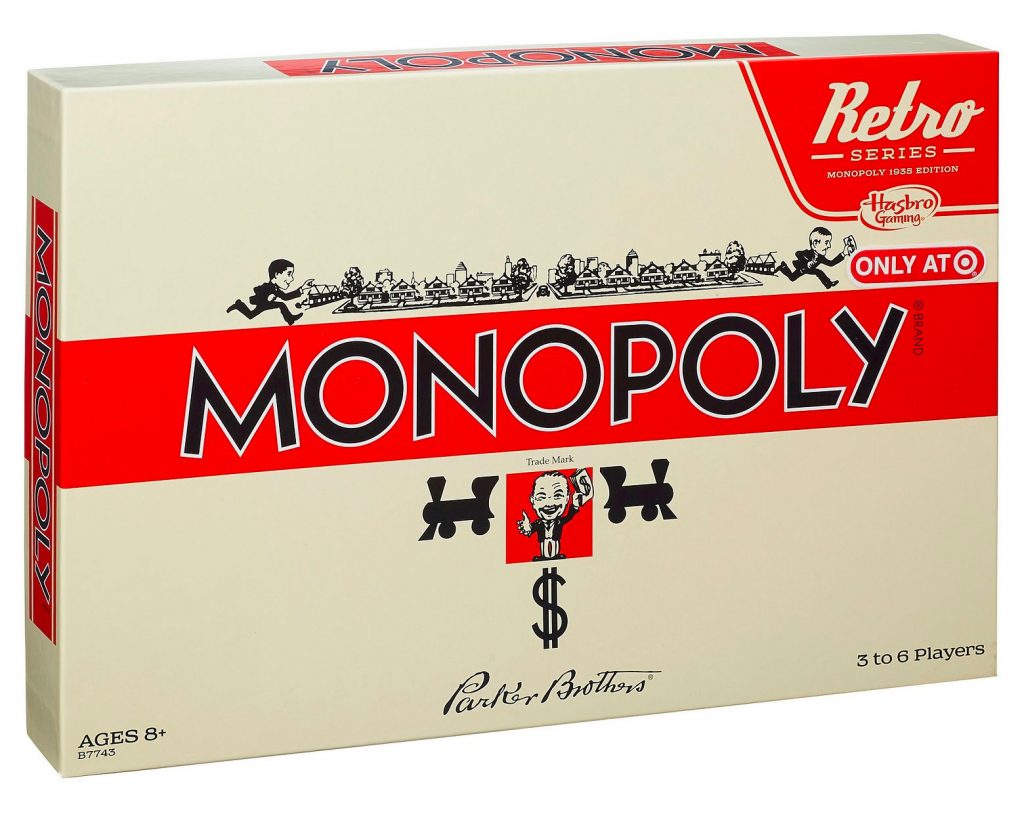
In case you’ve never played Monopoly, it’s a roll and move game in which the players are trying to establish ownership of the various pieces of real estate that are situated along the edge of the board and then develop these pieces of real estate by building hotels and housing upon them. On a player’s turn, they will roll both dice and move that number of spaces along the board. If they end up on an unowned property they will have the option to buy that property and, if they turn down that opportunity, the property is auctioned off to the highest bidder.
On subsequent turns, when a non-owner player lands on this property, they will have to pay the owner of that property rent. The amount owed is determined by how much the owner has beefed up the property during the course of the game. As the properties become more and more developed, it becomes more and more difficult to pay for things and the players will eventually go bankrupt one by one. The last player left wins the game.
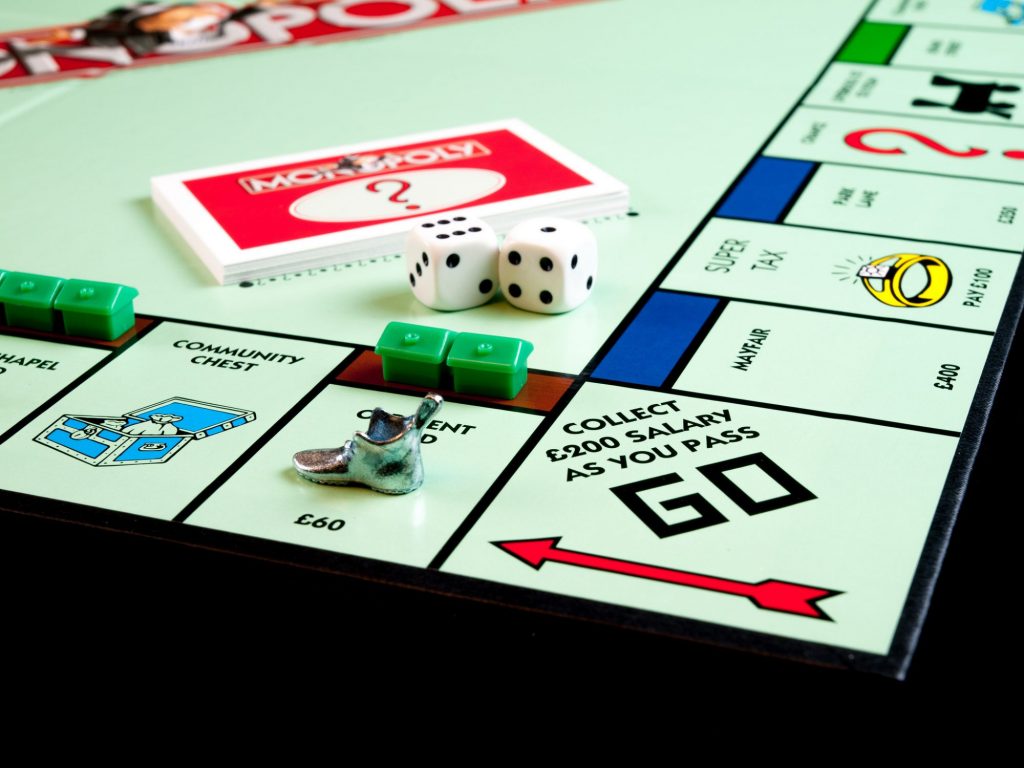
Monopoly, while unarguably a very successful board game, suffers from a couple of major flaws. Firstly, it is almost entirely dependent on luck. The players chuck the dice, but have very little control over what happens to them. Secondly, played sans variant, a game of Monopoly can take a very long time to complete. The next game on our list addresses both of these flaws with aplomb. While a vastly different game, it is mechanically familiar enough that it serves as an easy transition up the step ladder.
Dice City
If you were to distill Monopoly down to its basic essence, you’d have a game that utilizes dice to move around a board in order to purchase and develop real estate. Dice City offers a similar, yet more refined experience. In Dice City, each player begins with their own pre-established estate and a set of white, blue, red, black, and yellow dice. This estate is divided into a grid with each column represented by a number and each row represented by a color. Each section of the grid provides a benefit of some sort.
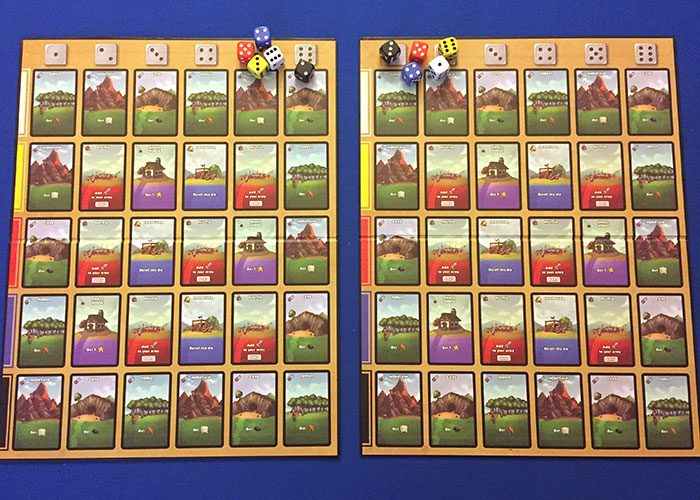
In the center of the table are a collection of cards which, when purchased, are added to the players’ estates. When the dice are rolled, they are placed onto the grid according to their color/number combinations. The benefits of the spaces the dice are placed upon allow the players to collect the resources needed to purchase the cards. Each card provides a new, unique benefit as they are added to players’ estates and give the players new opportunities on subsequent turns. This is an oversimplification, of course.
If you’d like to know more about how the game is played, check out Jesse Fletcher’s excellent review of Dice City here. Dice City’s a fun and engaging game that’s pretty easy to learn. Because the game presents the players with a method to mitigate their luck, it provides an element of strategy that makes this game a significant step up from the first game on this list.
The Castles of Burgundy
In The Castles of Burgundy, each player is provided an empty estate board that is divided up into various colors. These colors are divided up into hexagonal sections. During the course of the game, the players will be rolling two dice on their turn and using these to collect and place hexagonal tiles from a central supply onto their estates.
Each of the tiles has a different ability that fires off as the tile is placed. For instance, placing a Carpenter’s Workshop into your estate will let you place any of the face up building tiles from the supply into your storage area, while placing a Castle tile will allow you to perform any of the possible actions. If a colored in area is completed, then the player earns points for the size of the area and bonus points based on the round of gameplay in which the area was filled in. Bonus points are also awarded to the first and second player to fill in ALL of a particular color on their estates. At the end of the game, the player with the most points is victorious.
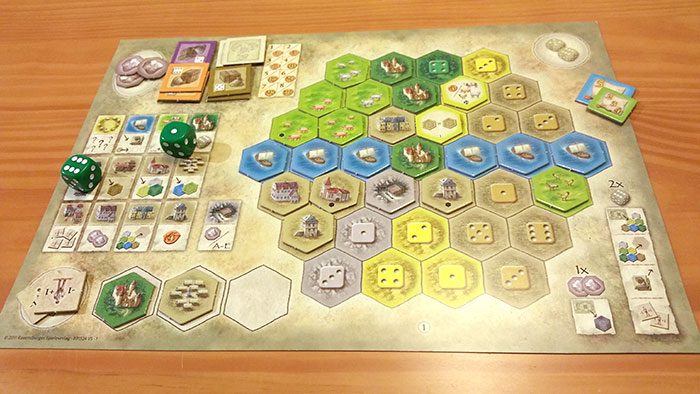
I placed The Castles of Burgundy on this step ladder because it is the epitome of real estate development with dice. The intention of these step ladders is not to provide you with a list of games that are exactly the same, but to smoothly transition you from one game to the next using similar mechanics. The Castles of Burgundy finished what Dice City started. Even though there are dice involved, they don’t dictate how you will play the game. Instead, they are obstacles that must be overcome. It’s a game that forces you to not only focus on the here and now, but to strategically put yourself into a position to seize upon opportunities that you will encounter in the future. And it seems fitting that since I began this list with one of my least favorite games that I bring it to a conclusion with one of my all time favorites.
What do you think about Step Ladder – Real Estate Development With Dice? Give us your opinions in the comments below!


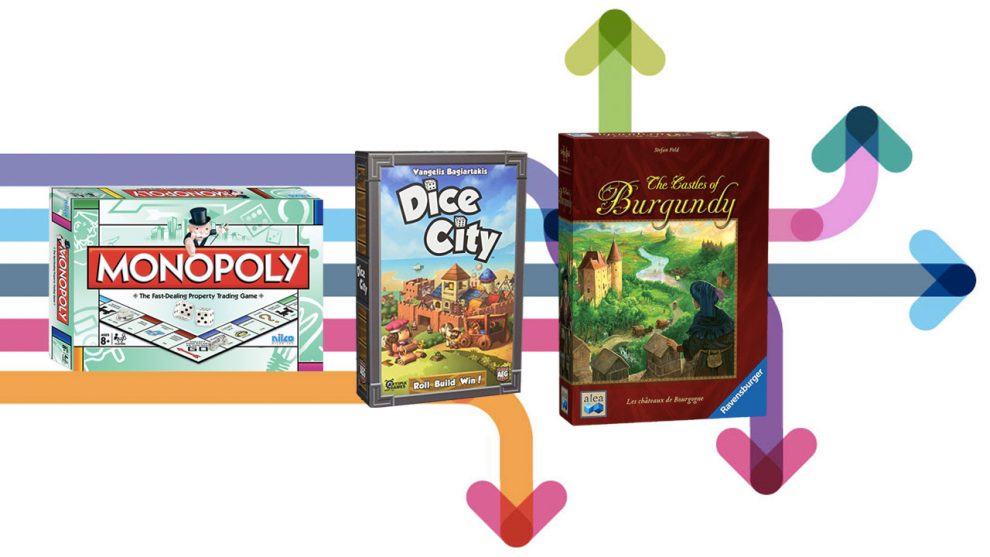








Add Comment